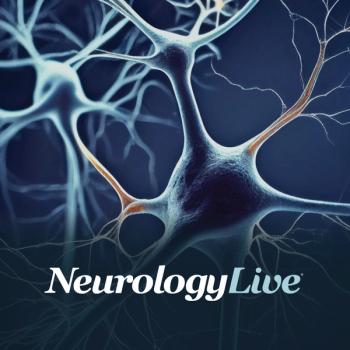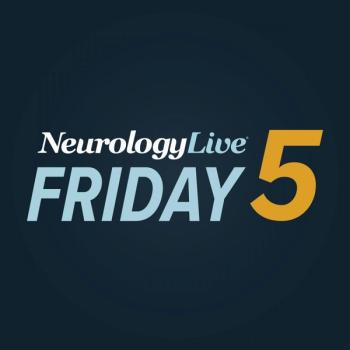
NeuroOne Submits OneRF Ablation System Application for Treating Trigeminal Neuralgia-Related Facial Pain
Key Takeaways
- NeuroOne's OneRF Ablation System targets trigeminal neuralgia using minimally invasive radiofrequency energy for precise nerve ablation and pain relief.
- The system's FDA approval could lead to revenue generation by late 2025, expanding its clinical impact beyond epilepsy treatment.
NeuroOne's OneRF system, already cleared for functional neurosurgery, is now being evaluated by the FDA for trigeminal nerve ablation to treat chronic facial pain.
According to a recent announcement, NeuroOne formally completed its FDA submission for its proprietary OneRF Ablation System for the treatment of trigeminal neuralgia, a chronic pain condition affecting approximately 100,000 people in the U.S.1
The OneRF Trigeminal Nerve Ablation system offers a minimally invasive approach that uses radiofrequency (RF) energy to target and destroy abnormal tissue, providing relief from severe, chronic facial pain. Its multi-contact probe enables precise pain localization, stimulation, and ablation–using a single electrode–with the added safety of temperature-controlled lesioning.
"Our OneRF® ablation technology platform has already achieved successful commercialization and patient outcomes in lesioning nerve tissue for functional neurosurgical procedures, such as the treatment of epilepsy. Expanding into facial pain broadens the clinical impact of our technology and further validates the versatility and scalability of our platform," Dave Rosa, president and chief executive officer at NeuroOne, said in a statement.1 "If cleared by the FDA, we believe there is a potential to generate revenues from trigeminal nerve ablation in late calendar year 2025."
In the context of pain management, RF ablation uses radio waves to create a current that heats a small area of nerve tissue. The heat destroys that area of the nerve, stopping it from sending pain signals to your brain. RF ablation has been shown to provide lasting relief for patients with chronic pain, especially in the lower back, neck, and arthritic joints.2 For patients with trigeminal neuralgia, this procedure involves applying controlled thermal energy to the trigeminal nerve, typically at the Gasserian ganglion, to disrupt pain signal transmission.
To date, there are no medications specifically FDA-approved for trigeminal neuralgia. Instead, several drugs approved for other indications–like epilepsy or neuropathic pain–have been used off-label or are recognized in clinical guidelines as first-line treatments for trigeminal neuralgia. These include carbamazepine, which has been shown to be effective in reducing paroxysmal facial pain, and oxcarbazepine, which has been used off-label because of a better tolerability profile than carbamazepine.
READ MORE:
The features of the OneRF Trigeminal Nerve Ablation technology are also present in the OneRF stereoencephalography (sEEG) Ablation System, a 510(k) cleared modality. In 2023, the
The Evo sEEG Electrode is designed for subsurface brain monitoring and stimulation, helping clinicians pinpoint optimal zones for intervention. It is over seven times thinner than traditional silicone electrodes, offering greater flexibility and reduced volume to help minimize pain and swelling. Its single-tail, single-incision design streamlines access, lowers infection risk, and shortens procedure time. Each electrode comes with a disposable cable assembly, eliminating the need to match cables during surgery.
Related Research
A 2023 study published in Pain Medicine compared the effectiveness and safety of trigeminal percutaneous RF ablation in a cohort of 30 consecutive patients with classical trigeminal neuralgia who had failed to respond to drug treatment. In this double-blind, placebo-controlled study, patients were randomized to receive either a 75 degree thermal RF lesion for 60 seconds following sensory and motor stimulation or a sham procedure. After 1 month, mean scores on the Numerical Rating Scale (NRS) decreased from 9.2 to 0.7 in the RF group and from 8.9 to 5.8 in the sham group. Overall, the significant reduction was measurable starting at day 1, further supporting the use of RF nerve ablation as a treatment for refractory trigeminal neuralgia.4
REFERENCES
1. NeuroOne® Completes FDA Submission for the OneRF® Trigeminal Nerve Ablation System to Treat Facial Pain. News release. NeuroOne. April 23, 2025. Accessed April 23, 2025. https://www.globenewswire.com/news-release/2025/04/23/3066444/0/en/NeuroOne-Completes-FDA-Submission-for-the-OneRF-Trigeminal-Nerve-Ablation-System-to-Treat-Facial-Pain.html
2. Radiofrequency Ablation for Pain Management. Cleveland Clinic. Updated March 14, 2022. Accessed April 23, 2025. https://my.clevelandclinic.org/health/treatments/17411-radiofrequency-ablation
3. NeuroOne receives FDA 510(k) clearance to market its OneRF Ablation System. News release. NeuroOne. December 11, 2023. Accessed April 23, 2025. https://www.globenewswire.com/news-release/2023/12/11/2793821/0/en/NeuroOne-Receives-FDA-510-k-Clearance-to-Market-its-OneRF-Ablation-System.html
4. Mansano AM, Frederico TN, Valentin RE, Carmona MJC, Ashmawi HA. Percutaneous Radiofrequency Ablation for Trigeminal Neuralgia Management: A Randomized, Double-Blinded, Sham-Controlled Clinical Trial. Pain Med. 2023;24(3):234-243. doi: 10.1093/pm/pnac132.
Newsletter
Keep your finger on the pulse of neurology—subscribe to NeurologyLive for expert interviews, new data, and breakthrough treatment updates.


































